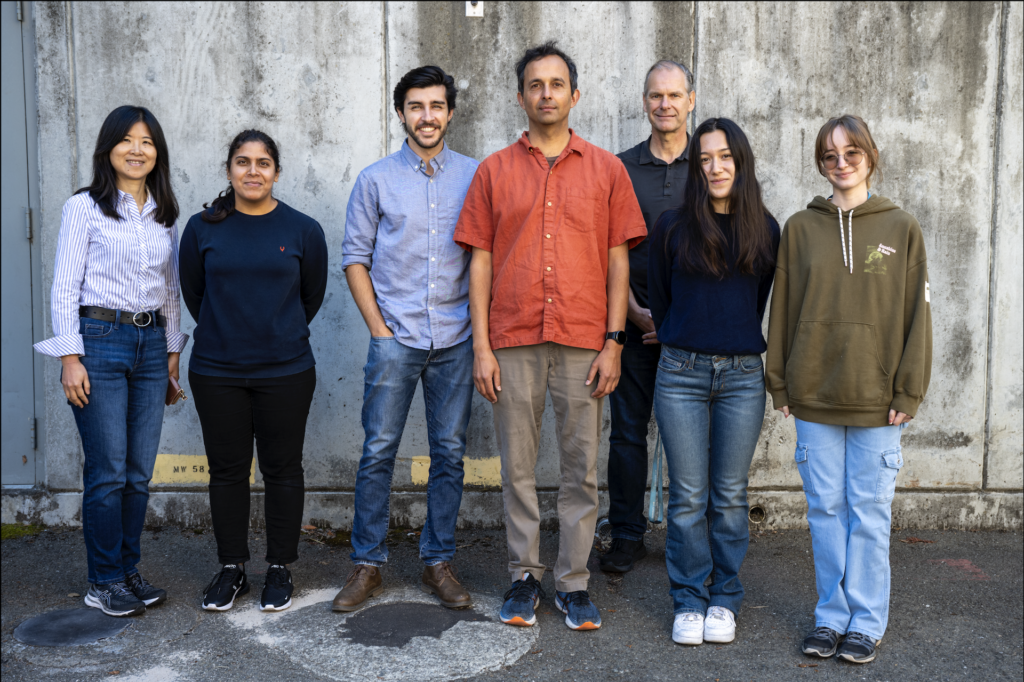On December 18, 2024, the National Science & Technology Council Subcommittee on Quantum Information Science (QIS), established under the National Quantum Initiative Act enacted in 2018, released the National Quantum Initiative Supplement To The President’s FY2025 Budget. This annual report on the National Quantum Initiative (NQI), which aims to ensure continued U.S. leadership in QIS, highlights investments in the NQI program and builds upon the establishment of NQI research centers, the Quantum Economic Development Consortium, and new QIS R&D activities.
This fifth annual report showcases innovative research carried out by scientists and engineers in the Accelerator Technology & Applied Physics (ATAP) Division at the Department of Energy’s Lawrence Berkeley National Laboratory (Berkeley Lab) on a new method for fabricating optical quantum bits (qubits)—the essential components of quantum technologies—in silicon.
The technique developed by researchers from ATAP’s Fusion Science & Ion Beam Technology (FS&IBT) Program, led by Kaushalya Jhuria, a former ATAP Division postdoctoral scholar and now an assistant professor at the Indian Institute of Technology, Tirupati, India, creates programmable, microscopic defects known as “color centers” in silicon wafers. This is accomplished using ultrafast, femtosecond laser pulses in combination with hydrogen-based defect activation and passivation at a single center level to anneal silicon with pinpoint precision where those qubits should be precisely formed. Because they can connect photons with the spin states of electrons and nuclei, these telecommunications qubits, or “spin photon qubits,” are promising candidates for quantum networking—communication networks that securely link quantum devices and systems.

(l-r) Qing Ji, Kaushalya Jhuria, Mica Karahadia, Arun Persaud, Thomas Schenkel, Elettra Preosti, and Caroline Egan. (Credit: Thor Swift/Berkeley Lab)
The project, a collaboration involving the Materials Sciences Division, the Molecular Foundry, the National Energy Research Scientific Computing Center (NERSC) QIS@Perlmutter program at Berkeley Lab, and the University of California, Berkeley, establishes a method for creating telecom-band optical qubits in silicon for large-scale manufacturing. This technique could enable the development of scalable quantum computers by leveraging existing silicon-based computing infrastructure. The Department of Energy Office of Fusion Energy Sciences supported this work.
In addition to this work, ATAP also supports NQI through ongoing research. For instance, an interdisciplinary team of researchers led by ATAP’s Berkeley Accelerator Controls & Instrumentation Program has developed a groundbreaking technique that can rapidly and accurately measure the state of a superconducting qubit. This work, supported by funding from the Quantum Systems Accelerator under the Department of Energy (DOE)’s Office of Science National Quantum Information Science Research Centers, led by Berkeley Lab and center partner Sandia National Laboratories, in addition to the Advanced Quantum Testbed, a DOE Office of Science Advanced Scientific Computing Research program, operates at the intersection of quantum computing and artificial intelligence. It integrates machine learning with conventional electronic control systems to conduct real-time, mid-circuit measurements of a superconducting qubit’s state. This technique holds promise for advancing quantum computing while delivering ultra-high-precision control technology for particle accelerators and laser systems.
In collaboration with colleagues from Berkeley Lab’s Physics Division, Princeton University, and the California Institute of Technology, researchers from FS&IBT have proposed a novel approach that utilizes quantum sensing of the spin of helium-3 atoms to detect dark matter particles. Funded by the DOE’s Office of High Energy Physics for the Quantum Information Science Enabled Discovery (QuantISED) program, led by Physics Division Senior Scientist Maurice Garcia-Sciveres, this work promises a new technique that extends the search for dark matter into mass ranges below the detection threshold of current detectors and could lead to more powerful sensors for applications in particle physics, astrophysics, and cosmology.
To learn more …
K. Jhuria, V. Ivanov, D. Polley, Y. Zhiyenbayev, W. Liu, A. Persaud, W. Redjem, W. Qarony, P. Parajuli, Q. Ji, A. J. Gonsalves, J. Bokor, L. Z. Tan, B. Kanté, and T. Schenkel. “Programmable quantum emitter formation in silicon,” Nat. Commun. 15, 4497 (2024). https://doi.org/10.1038/s41467-024-48714-2
New Technique Could Help Build Quantum Computers of the Future
Machine Learning Accelerates Progress Toward Scalable Quantum Computers
For more information on ATAP News articles, contact caw@lbl.gov.
